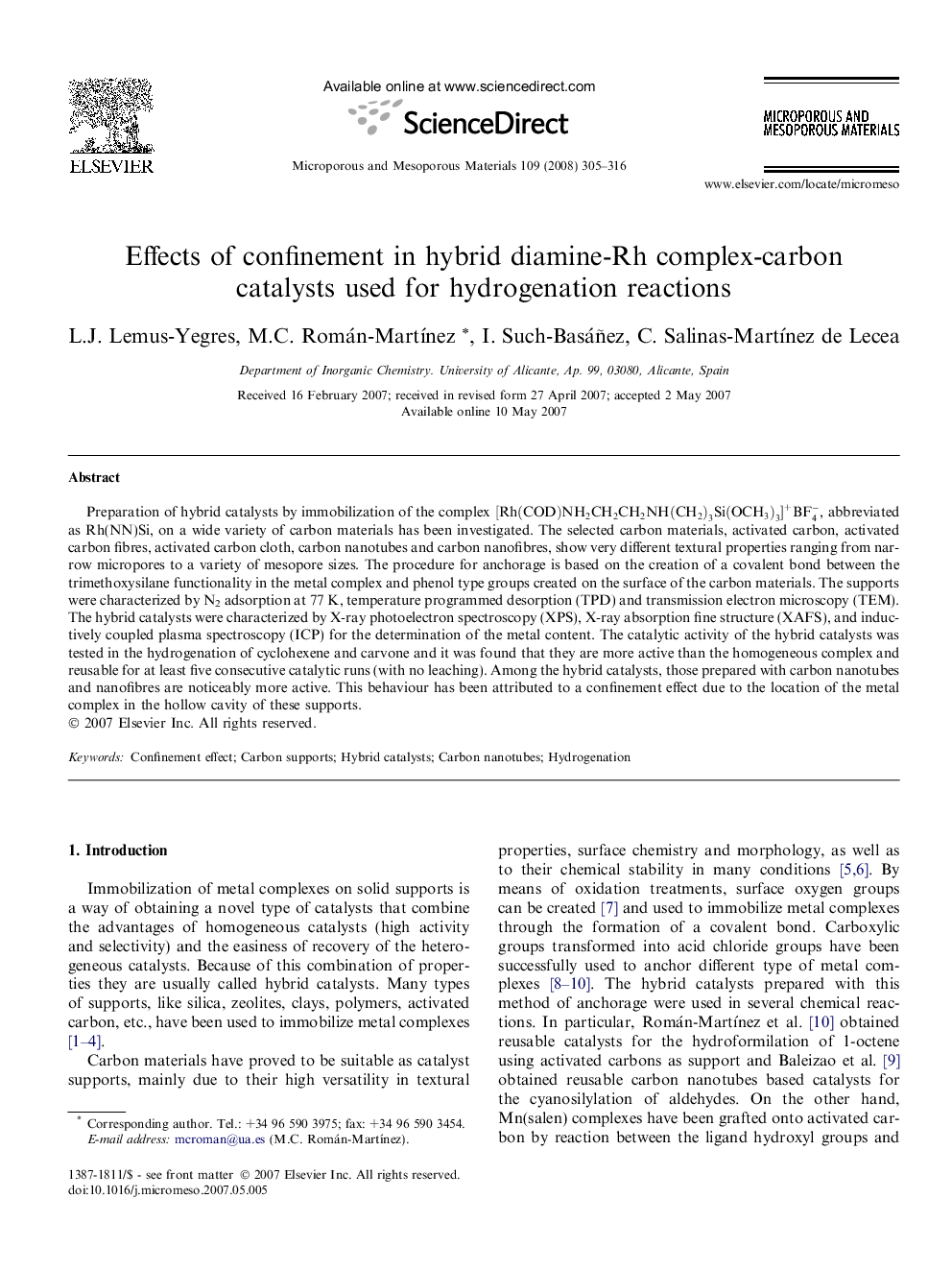| Article ID | Journal | Published Year | Pages | File Type |
|---|---|---|---|---|
| 76438 | Microporous and Mesoporous Materials | 2008 | 12 Pages |
Preparation of hybrid catalysts by immobilization of the complex [Rh(COD)NH2CH2CH2NH(CH2)3Si(OCH3)3]+BF4-, abbreviated as Rh(NN)Si, on a wide variety of carbon materials has been investigated. The selected carbon materials, activated carbon, activated carbon fibres, activated carbon cloth, carbon nanotubes and carbon nanofibres, show very different textural properties ranging from narrow micropores to a variety of mesopore sizes. The procedure for anchorage is based on the creation of a covalent bond between the trimethoxysilane functionality in the metal complex and phenol type groups created on the surface of the carbon materials. The supports were characterized by N2 adsorption at 77 K, temperature programmed desorption (TPD) and transmission electron microscopy (TEM). The hybrid catalysts were characterized by X-ray photoelectron spectroscopy (XPS), X-ray absorption fine structure (XAFS), and inductively coupled plasma spectroscopy (ICP) for the determination of the metal content. The catalytic activity of the hybrid catalysts was tested in the hydrogenation of cyclohexene and carvone and it was found that they are more active than the homogeneous complex and reusable for at least five consecutive catalytic runs (with no leaching). Among the hybrid catalysts, those prepared with carbon nanotubes and nanofibres are noticeably more active. This behaviour has been attributed to a confinement effect due to the location of the metal complex in the hollow cavity of these supports.
